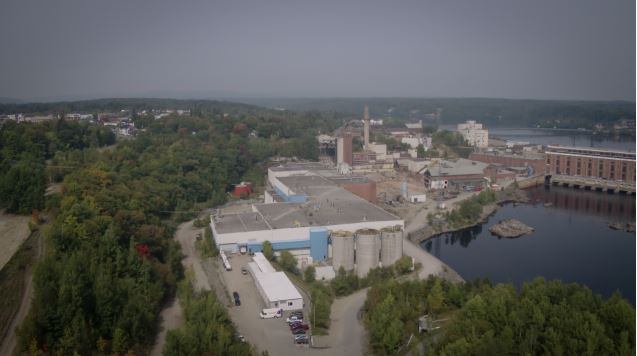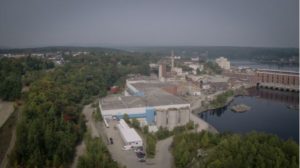Nemaska adds last $400 million piece to lithium financing jigsaw

Nemaska's hydrometallurgical plant in Shawinigan, Quebec. Source: Nemaska Lithium Inc.

Nemaska Lithium Inc. [NMX-TSX, NMKEF-OTCQX, NOT-FSE] shares were active Wednesday May 23 on news that the company is raising up to $402 million to fund a lithium mine and processing plant in Quebec.
Over 7.29 million Nemaska shares changed hands in early trading Wednesday, making it the most actively traded stock on the TSX. The shares eased 16% or $0.019 to 99 cents.
Nemaska is aiming to become a leading supplier of lithium hydroxide and lithium carbonate to the consumer and automotive lithium-ion battery market. It hopes to achieve that goal by mining lithium contained in the mineral spodumene, initially from an open pit operation at Whabouchi.
Concentrates produced at the mine site will be shipped to a hydrometallurgical plant in Shawinigan, Quebec, and converted into lithium hydroxide and lithium carbonate.
“Today marks a big day in the life of Nemaska Lithium, as we are announcing the last piece of financing required to start the commercial development of the Whabouchi lithium mine,” said Nemaska President and CEO Guy Bourassa in a press statement that was released after the close of trading on May 22.
The financing package has two main components, including:
A bought deal offering of 280 million shares priced at $1 each that will be underwritten by a syndicate led by National Bank Financial Inc., BMO Capital Markets, and Cantor Fitzgerald Canada Corp.
The underwriters have been granted an over-allotment option that could bring in an additional $42 million if the option is fully exercised.
Nemaska said it also plans to raise a further $80 million from a private placement of shares with institutional investors.
This project financing package, which covers capital expenditures of both the Whabouchi mine and Shawinigan electrochemical plant, project contingencies, working capital requirements and financing costs, will ensure the future of Nemaska Lithium, the company said.
It will also allow the company to stay on target to initiate the commissioning of the Whabouchi mine by the second half of 2019 and start commissioning the Shawinigan electrochemical plant during the first half of 2020.
As part of a large plan to fund the proposed lithium project, the company recently announced various components of a proposed US$775 million to US$825 million financing package. The components included:
- A US$150 million streaming agreement with Orion Mine Finance LP;
- A US$350 million bond offering;
- A private placement of 88.4 million subscription receipts to SoftBank Group Corp. in escrow for $99 million. The SoftBank private placement is expected to result in the conversion of 83.7 million subscription receipts into Nemaska common shares and the release from escrow of $93.8 million.
SoftBank will wind up owning 9.9% of Nemaska following the completion of the private placement. A 9.5%-owned affiliate of China’s Tianqi Group (the world’s largest producer of lithium chemicals), Nemaska sees itself as being several years ahead of its Canadian competitors.
An updated Whabouchi feasibility study announced in January 2018, encompasses a combined open pit and underground mine operation, concentration facilities, tailings and water management at mine site as well as a hydrometallurgical processing facility in Shawinigan.
The feasibility study foresees a total initial capital cost of CDN $801 million, average life-of-mine revenue of $581 million per year, and life-of-mine production of 7 million tonnes of spodumene concentrate. That material would be converted to 770,000 tonnes of battery grade lithium hydroxide and approximately 361,000 tonnes of battery grade lithium carbonate. The estimated mine life is 33 years.
The study foresees annual average production of 213,000 tonnes of concentrates, generating 23,000 tonnes of lithium hydroxide and roughly 11,000 tonnes of lithium carbonate.
